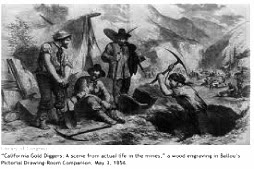 |
| Thomas F. Weedin was a newspaperman and the owner of the Florence Blade-Tribune. |
He became a very important citizen of Florence, Arizona, as a journalist and businessman. You might say Tom Weedin changed the face of Arizona history and was fondly remembered in the Florence area for his accomplishments.
Weedin was born in Cooper County, Missouri, on December 15, 1854 (Arizona Republic, 10/1/1916, p. 1 col.3). He had identified with journalism and newspapers since he was nine years old, starting as a newsboy with the Kansas City Times.
Weedin worked his way through all of the paper’s departments and attended school at night. He became the editor of the Daily Herald in Fremont, Nebraska, in 1875. The following year he became city editor for the Omaha Herald. After two years in Omaha, he was hired as editor of the Daily Prospect in Silver Cliff, Colorado.
Weedin then abandoned newspaper work temporarily while in Colorado, choosing to explore prospecting and mining. His travels led him to Silver City, New Mexico, and then on to Tombstone in 1880.
Weedin picked up the editor’s pen once again in 1881 and established the Florence Enterprise on March 28 of that year. He ran the newspaper until President Grover Cleveland appointed him Clerk of the United States Territorial Court in his district.
Weedin returned to the newspaper business in 1900, establishing the Florence Blade. He bought the Florence Tribune that same year and consolidated the newspapers under the name Florence Blade-Tribune.
Early in President Woodrow Wilson’s term he appointed Tom Weedin the Registrar of the U.S. Land Office in Phoenix.
Weedin was a powerful writer whose editorial comments were thoughtful and interesting and were read eagerly and accepted by the public. He made the Florence Blade-Tribune the voice of the democratic party in Florence and developed a wide circulation with an outstanding advertising patronage. This support made the newspaper a powerful political tool in Pinal County and the rest of the state. He was a member of the 18th, 24th, and 25th Territorial Legislative Councils, serving as the floor leader of his party during all sessions on the side of right, reform and progress.
Weedin also served as the first mayor of Florence, Arizona Territory. He became an icon of the Florence political scene prior to the turn of the century.
Weedin had varied interests and was always fascinated with lost mines. He wrote stories about them and he grubstaked old prospectors. Weedin made many trips to Goldfield and the surrounding area and, according to one account, he spent time in the mountains looking for good mining property.
He listened to the stories about the Dutchman’s Lost Mine and carefully read P.C. Bicknell’s San Francisco Chronicle article on the Lost Mine that appeared in newspapers on January 13, 1895. Weedin never denied the existence of the Dutchman Lost Mine and added a special interest to this story through his newspaper.
Weedin probably will not be remembered for his many journalistic and political accomplishments. He will likely be remembered more for saving Arizonians from the fraudulent schemes of the Peralta Land Grant hoax perpetrated by James Addison Reavis, the infamous “Baron of Arizona”.
James Addison Reavis produced Spanish documents over several years (1880-1893) that gave him the rights to much of Arizona and New Mexico Territories.
Tom Weedin closely examined the ink and paper of these so-called Spanish Land Grant documents and determined that the documents were not as old as Reavis claimed because the ink used on them was modern.
Reavis was convicted of fraud in the U.S. Territorial Court in 1893 and eventually sent to prison. It was through the efforts of Tom Weedin and others that Reavis’ reign of economic terror over the Arizona Territory was ended in late 1880s.
Thomas F. Weedin passed away in his Phoenix home at 322 East Culver Street on October 6, 1916.
As you drive through Florence today, drive over to McFarland State Park in Florence and then stop by the old 1891 Victorian Pinal County courthouse. Think for just a moment... this old courthouse was a contemporary of Thomas F. Weedin. He walked its halls many times after it was constructed more than 100 years ago.
 |
| The Pinal County Courthouse (1891) is listed on the National Register of Historic Places. |


